Henry James Frampton was born in August 1897, at South Stoneham, Hampshire, first son of Henry Manwell Frampton (plasterer) and Mary Frampton. He served with distinction in the First World War and joined the Indian Civil Service (I.C.S.) in 1921.
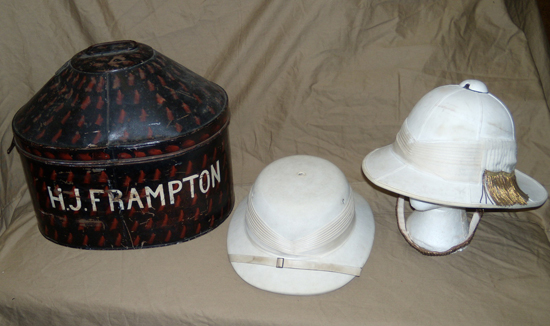
H.J. Frampton’s Wolseley helmet, pith helmet and accompanying storage/transit tin. (Photo courtesy Christopher Mills)
On the 25th January 1917 Henry was promoted from Cadet to Temporary 2nd Lieutenant in the Duke of Wellington’s Regiment (West Riding). He was promoted to Temporary Lieutenant on the 25th July 1917 and served in the 9th Battalion of that regiment. His entry in Kelly’s Handbook of Titled, Landed and Official Classes 1944 gives him a Captaincy in 1918 but a search of the Army Lists and the London Gazette revealed no such promotion, indeed as the MC citation below shows he was still a Temporary Lieutenant in 1919.
He was awarded the Military Cross, which was gazetted on the 8th March 1919 and the citation, gazetted on the 4th October 1919, reads –
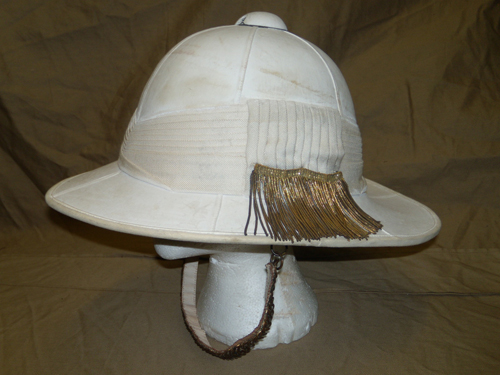
H.J. Frampton’s Wolseley, showing the distinctive white vertical pleated flash with gold bullion tassel. These were worn on ceremonial occasions by the I.C.S. and the Diplomatic Corps. (Photo courtesy of Christopher Mills)
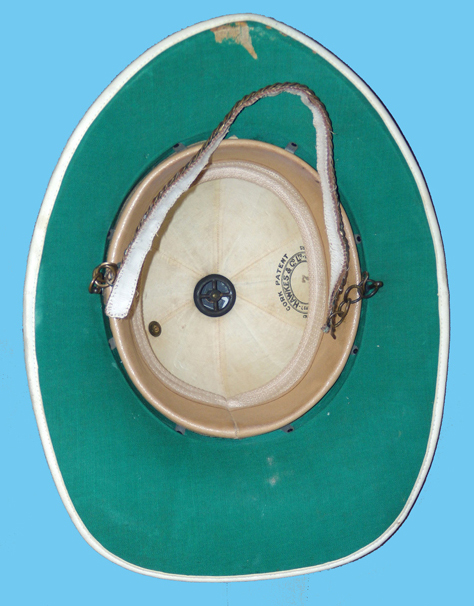
The interior of the Wolseley showing the cotton mesh attachment to the leather headband, the high hook nut and bolt and the maker’s stamp of Hawkes & Co. The method of ventilation between the helmet shell and the headband is clearly that of Hawkes patent of 1917. (Photo courtesy of Christopher Mills)
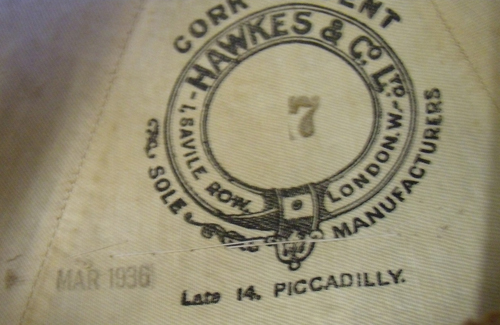
The Hawkes & Co. stamp and the date March 1936 are clearly visible to the interior. (Photo courtesy Christopher Mills)
Lt. Henry James Frampton does not appear in the Army List of 1920 and so resigned his commission in that year. In 1921 he joined the Indian Civil Service after passing the entrance exams. The Macaulay Committee Report of 1854 stated –
An appointment to the civil service of the Company will not be a matter of favour but a matter of right. He who obtains such an appointment will owe it solely to his own abilities and industry. It is undoubtedly desirable that the civil servants of the Company should have received the best, the most finished education that the native country affords. 2
The Report insisted that the civil servants of the Company should have taken the first degree in arts at Oxford or Cambridge Universities. 3
By 1920, there were five methods of entry into the higher civil service: firstly, the open competitive examinations in London; secondly, separate competitive examinations in India; thirdly, nomination in India to satisfy provincial and communal representation; fourthly, promotion from the Provincial Civil Service and lastly, appointments from the bar (one-fourth of the posts in the ICS were to be filled from the bar). 4
British control of the Indian Civil Service remained after the First World War, but faced growing difficulties. Fewer and fewer young men in Britain were interested in joining, and distrust of such posts among Indians resulted in a declining recruitment base in terms of quality and quantity. By 1945 Indians were numerically dominant in the ICS and at issue was loyalty divided between the Empire and independence. 5
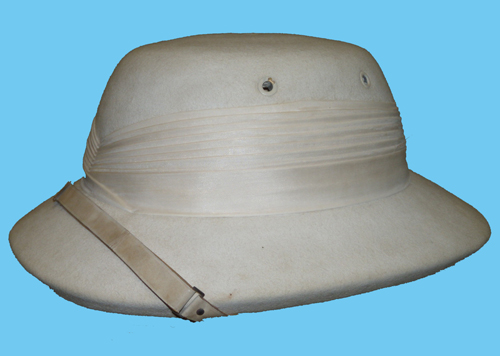
Henry Frampton’s pith helmet which was worn on non-ceremonial occasions. (Photo courtesy of Christopher Mills)
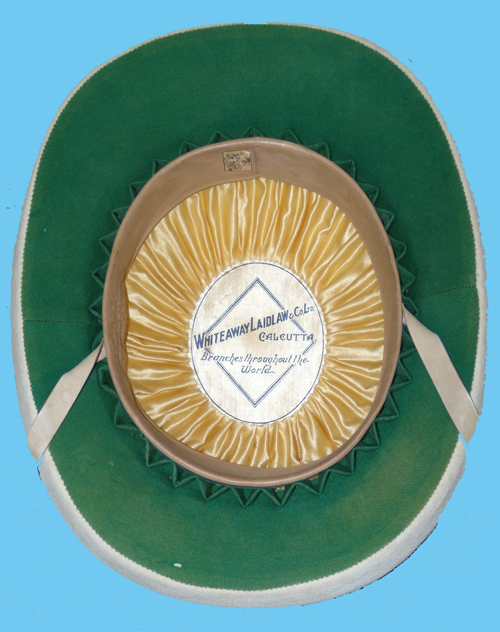
The interior of the pith helmet clearly showing the maker’s label. (Photo courtesy of Christopher Mills)
Here are some interesting observations from a lecture delivered at Trinity College, Dublin, in 1903 by Vincent A. Smith, M.A., I.C.S. (retd.), entitled The Indian Civil Service As A Profession. He starts by saying that the I.C.S. officer’s “call of duty may summon him to hunt…”
He also makes good mention of the boredom which afflicted many in the Service –
Frampton and was appointed Joint Secretary of the Home Department in 1938, was made a Companion of the Most Eminent Order of the Indian Empire (CIE) in 1941 when he was Deputy Secretary to the Indian Government in the Home Department, and a Companion of the Most Exalted Order of the Star of India (CSI) in 1947 by which time he was Chief Secretary to the Government of the United Provinces.
Henry James Frampton died in 1980 and his death is recorded as being at Bristol, Gloucestershire, United Kingdom.
Stuart Bates
- Allen, Charles, A Scrapbook of British India 1877-1947, André Deutsch Limited, London, 1977
- Macaulay Committee Report on the Civil Service (Fulton Committee Report), Vol.1, HMSO, London (1975)
- http://arc.gov.in/10th/ARC_10thReport_Ch2.pdf
- https://en.wikipedia.org/wiki/Imperial_Civil_Service
- Ibid.

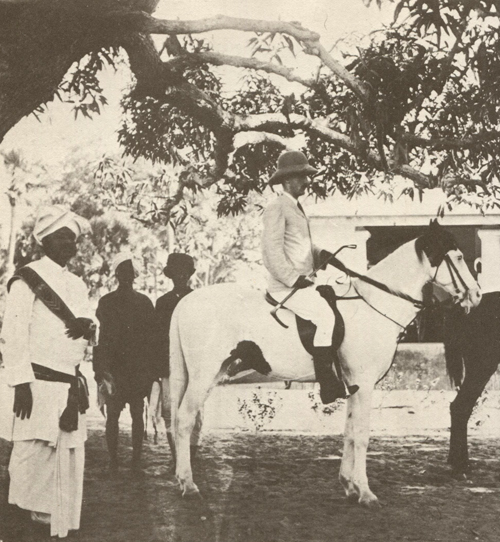
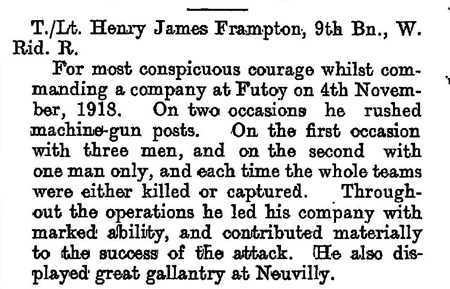
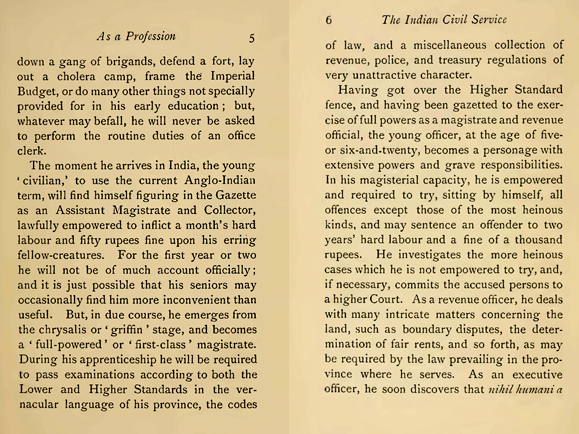
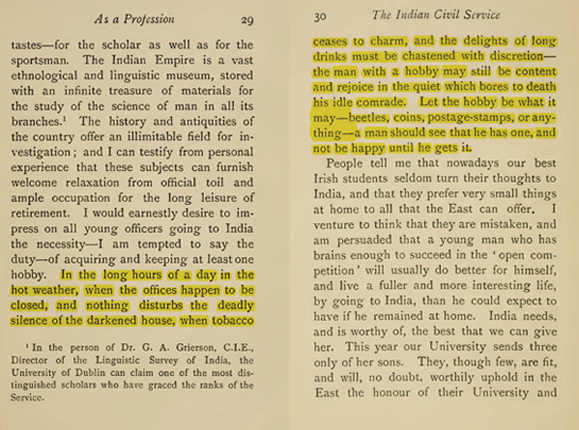
Could you tell me where his helmet is? I am a grand daughter and am interested in any further information about my grandfather.
Many thanks
Hi Heather,
the helmets etc. were on eBay back in 2013. I was going to bid but deferred to Christopher Mills who lives in London. I do not know whether he still has the items but his email is cpmills1@gmail.com.
Regards,
Stuart
Thank you!
i have one…i buyed at 20 years ago….if you are interesed you can find me at copilel@yahoo.com